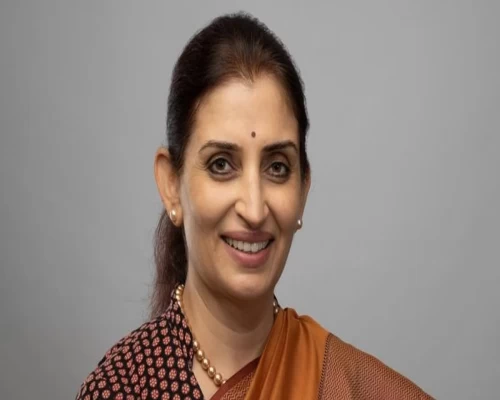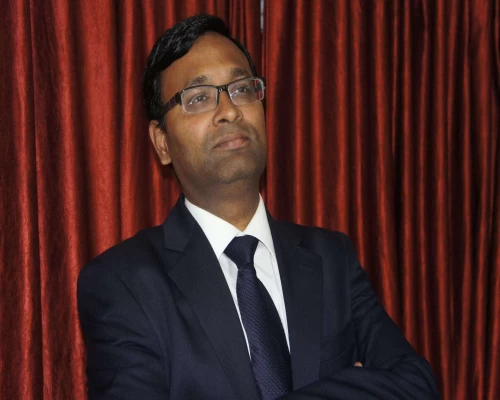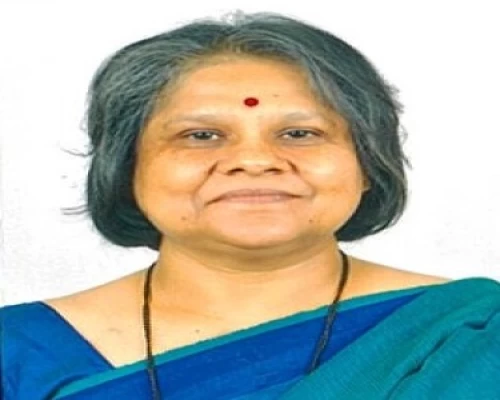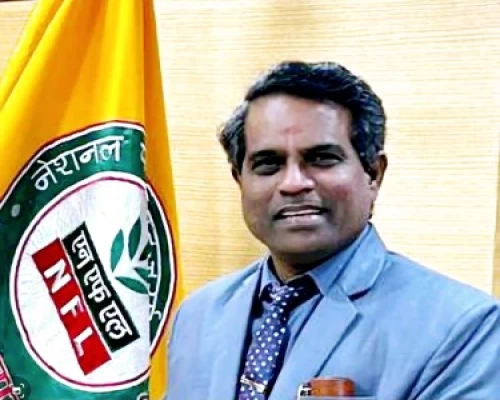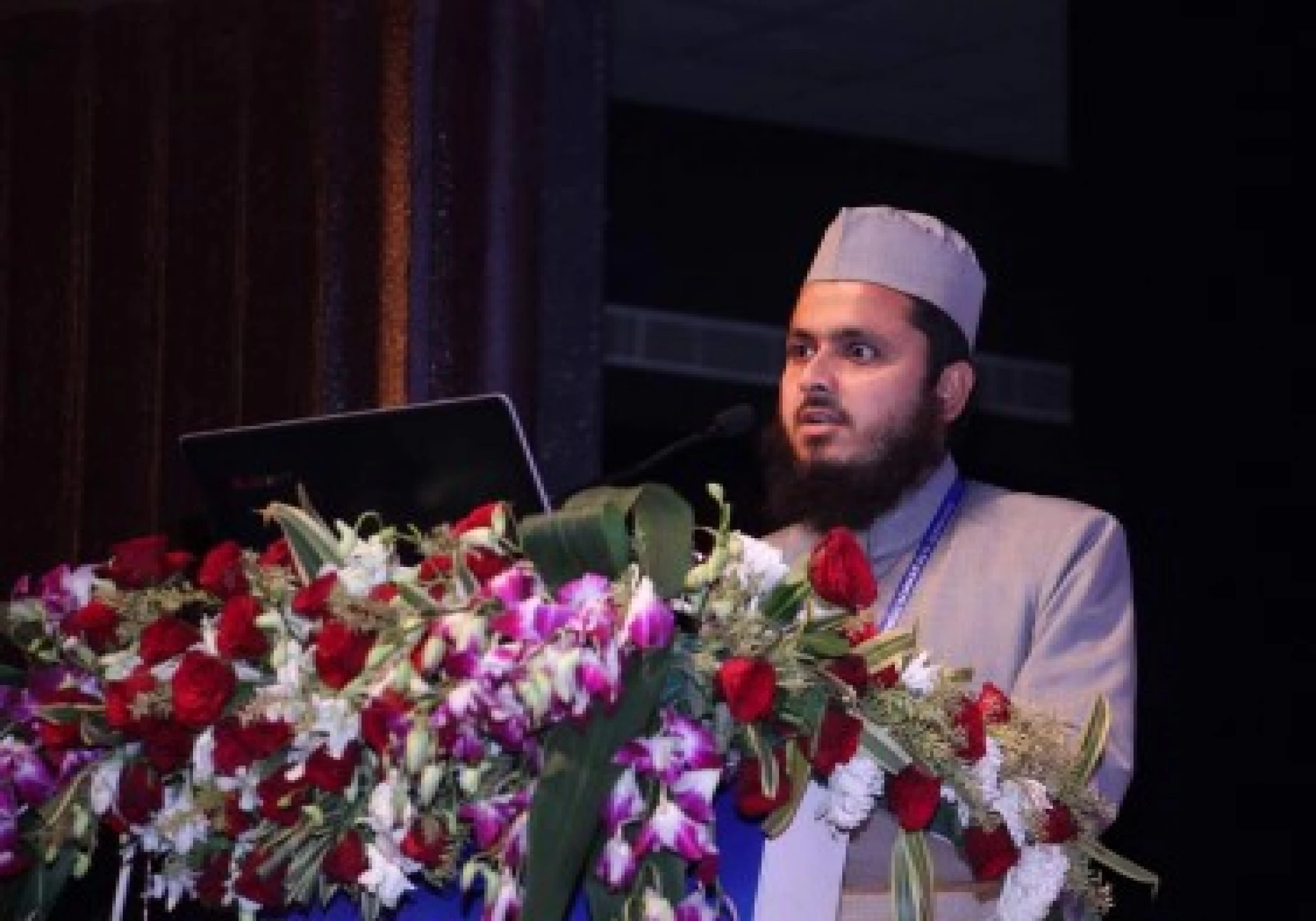
New Delhi: The Dedicated Freight Corridor (DFC) will be a great infrastructure asset for India. “It will not only decongest roads but will play a major role in making India self-reliant,” said Deputy Chief Project Manager Md Tanveer Khan in an exclusive interview to Rajeev Ranjan Roy of Bureaucrats India.
“The existing trunk routes of Howrah-Delhi on the Eastern Corridor and Mumbai-Delhi on the Western Corridor were highly saturated, line capacity utilization varying between 115 percent and to 150 percent. Not only this, the national highways along these corridors comprising 0.5 percent of the road network carried almost 40 percent of the road freight,” said Khan, an Indian Railway Service of Engineers (IRSE) officer of 2011 batch.
Khan, who is B Tech in Civil Engineering from AMU, Aligarh, and M Tech (Civil) from IIT, Roorkee, said: “The surging power needs requiring heavy coal movement, booming infrastructure construction and growing international trade led to the conception of the Dedicated Freight Corridors along the Eastern and Western Routes, to begin with. DFCCIL will decongest the already saturated road network and promote shifting of freight transport to a more efficient railway system.” Read The Full Interview Here:
Construction, operation and maintenance of dedicated freight corridors is a hugely challenging task. How has been the journey since the incorporation of DFCC on October 30, 2006?
In 2010-2011, the loan agreement was signed with the JICA and the World Bank. The contract for civil, structure and track for the Khurja-Bhaupur section of Eastern Corridor (EDFC) was awarded in January 2013 and for Rewari-Madar section of Western Corridor (WDFC) was awarded in June 2013. Accordingly, the construction work started, with challenges in land acquisition, no objections from other agencies such as PWD, Irrigation, NHAI, GAIL, etc., for crossing their utilities such as roads, canals, highways, gas pipe lines, etc., respectively and obtaining clearances from Forest department for passing through the forest land.
Finally, Khurja-Bhaupur section (351-km) of EDFC was inaugurated by Prime Minister Shri Narendra Modi and dedicated to the nation in December 2020. Simultaneously, Rewari-Madar section of WDFC was inaugurated by the Prime Minister and dedicated to the nation in January 2021. Other sections are planned to be opened by June 2022.
Regarding the operations, I am pleased to mention that the trains in the section are achieving an average speed of 90-kmph routinely. Even the trains have crossed the 99-kmph milestone. These speeds are even more than the average speed of Rajdhani Trains.
It is said that DFC won’t only help Indian Railways regain its market share in freight transport but will be an infra marvel when fully operational. What is your take?
Yes, you are absolutely right. Railways had lost the share in freight traffic from 83 percent in 1950-51 to 35 percent in 2011-12 due to shifting to road networks for early delivery, as in railways, passenger traffic is being given preference over freight traffic and hence causing delay in freight delivery, but due to the congestion in the road network, people are looking forward to some solution to this problem.
DFC is a solution to this problem and will decongest the already saturated road network & promote shifting of freight transport to more efficient rail transport. This shift is expected to offer significant reduction of GreenHouse Gas (GHG) emissions in the transport sector in India. It is expected that DFC will save more than 450 million ton of Carbon Di-oxide in the first 30 years of operation.
Efficient, reliable, safe and cheaper freight transport facility acts as a catalyst for an economy. Do you think that DFC will prove so and we will have lesser burden on our roads?
It is absolutely true. With the Dedicated Freight Corridors, the Indian Railways aim to bring about a paradigm shift in freight operation with prime objective of reduction in unit cost of transportation with higher speed of freight trains, better turnaround of wagons and thereby much improved wagon productivity in terms of improved ton-km per wagon-day, increased payload to tare ratio by introduction of higher axle load wagons on the rail network, improved locomotive utilization and improved specific fuel consumption. The ultimate objective is to reduce the Operation and Maintenance Cost (O&M Cost) and after all the benefit will be passed on to the customer. Dedicated Freight Corridors aim to provide faster and cheaper freight movement across the country, by taking into account the social and environmental impact also.
Multimodal logistic parks along DFC are an important part of the project so that a complete transport facility is provided to customers. What is the progress on that front?
Multimodal logistics parks or freight terminals and theme parks alongside DFC will also be developed. Such commercial hubs will definitely generate a lot of employment opportunities for the local public. Also by building freight corridors, existing lines of Indian Railways will be decongested and in turn will run more passenger trains efficiently.
Delhi Mumbai Industrial Corridor (DMIC) constructed along the WDFC for building of industrial hubs along the corridor and Amritsar Delhi Kolkata Industrial corridor (ADKIC) planned along EDFC will revolutionize the industrial base of the Indian economy. As part of Delhi Mumbai Industrial Corridor (DMIC) Project, logistic phubs are being developed in the states of Gujarat, Maharashtra, Uttar Pradesh and Madhya Pradesh.
The development of ADKIC will be taken up in a band of 150-200 km on either side of EDFC, in a phased manner. In the first Phase, every State could promote at least one cluster of about 10 km2 area to be called Integrated Manufacturing Cluster (IMC), in which 40 percent area would be earmarked permanently for manufacturing and processing activities. ADKIC will use both the Public-Private Partnership (PPP) approach and non-PPP approach. Industries have started coming up along the freight corridor due to better transit time.
Ecological sustainability is a major concern when planning a freight transport infrastructure. Railways despite being the most environment friendly mode of transportation are losing their share. What is your take?
As I had already mentioned to you, Railways being the most environment friendly mode of transportation had lost the share in freight traffic from 83 percent in 1950-51 to 35 percent in 2011-12 due to shifting to Road networks for early delivery as passenger traffic is being given preference to freight traffic and hence causing delay in freight delivery. As railway is predominantly focused on providing the better and comfortable mode of public transport and dedicated to the development and reaching the far countryside areas to each and every countryman and also for the social development of the area, so earning from the freight transport was not given the priority, but with the development of Dedicated Freight Corridors the freight traffic will shift back to railways due to speedy and time bound transits (DFC).
As a Civil Engineer, you have more than 15 papers published in national and international journals to your credit. How has our civil engineering evolved over the years?
The earliest practice of civil engineering may have commenced between 4000 and 2000 BC in ancient Egypt, the Indus Valley Civilisation, and Mesopotamia when humans started to abandon a nomadic existence, creating a need for the construction of shelter. Modern times face modern problems, each of which requires expertise and specific attention to details during design and construction processes. To aid this, civil engineering further got sub-divided into various branches with specific focus on various different types of engineering and specialised structural aspects.
Geo-technical engineering is the study of the soil supporting the superstructure systems. Knowledge of soil mechanics, material properties, and hydraulics is applied to design safe and economic foundations, retaining walls, and other structures. Geo-environment is a further area of study to protect groundwater and safely maintain landfills.
Structural engineering is concerned with the structural design and analysis of buildings, bridges, towers, overpasses, tunnels, offshore structures, aero-structure and other structures.
Transportation engineering is concerned with moving people and goods (freight) efficiently, safely, and quickly. This involves designing, constructing, and maintaining transportation infrastructure which includes streets, canals, highways, rail systems, airports, ports, and mass transit.
Water resource engineering is concerned with the collection and management of water. It therefore combines hydrology, environmental science, meteorology, conservation, and resource management. This area of civil engineering relates to the prediction and management of both the quality and the quantity of water in both underground (aquifers) and above ground (lakes, rivers, and streams) resources. Environmental engineering deals with treatment of chemical, biological, or thermal wastes, purification of water and air, and remediation of contaminated sites after waste disposal or accidental contamination.
Civil Engineering marvels of our country such as Pir Panjal Railway Tunnel (Jammu & Kashmir), Bandra-Worli Sea Link (Maharashtra), Pamban Bridge (Tamil Nadu), Mahatma Gandhi Setu (Bihar), Panval Nadi Viaduct (Maharashtra), Statue of Unity (Gujarat), Chenab Railway Bridge (under construction in Jammu & Kashmir), etc., speak itself the development of civil engineering over the years in our country.
Balancing the environment, construction technology and sustainability is not an easy task. As an expert, do you think that we have reached the global level in this regard?
Yes, of course, we have reached the global level in this regard and further continuing in the direction of sustainable construction in the country with the use of renewable energy and recycling of our resource raw materials, using waste materials to build new assets without compromising the strength.
I have myself while dealing with several projects related to Railways, focused on the development of sustainable infrastructure and reduction of carbon footprints during the construction.
It is tough to balance the environment, construction technology and sustainability if we follow routine and standard practices but it can be made easy by thinking Out of Box, using innovative methods for doing the work and paying attention to this aspect. Wonders can be done by getting yourself involved and not leaving the things to subordinates.
Waste management is a crucial challenge to infra capacity building and upgradation. How things have improved over the years in our country?
The main and the foremost requirement for the waste management in the country is changing our mentality. I used to say that “Waste is not a waste until you waste it.” We have to think about how we can reuse the waste which is generated in our houses, offices, shops, project sites etc. Brainstorming is required. In my present project of DFC, we are using the waste concrete to develop benches, waste water bottles to develop flower pots, waste plastics are shredded to pieces and filled in the plastic bottles and used as construction bricks. This is just an example we can do wonders.
Last but not the least, are we creating infrastructure of the best quality, matching global standards?
Yes! In DFCCIL, we are creating the infrastructure of the best quality and matching the global standards by using the best quality materials and best world class machinery. In addition to this by introducing the various checks and balances at each and every step of the pre-construction, during construction and post construction activities, we are maintaining the best quality of construction. The track laying machinery being used in DFCCIL has never been used in India before. It is manufactured by US based company ‘Harsco Rail.’ Harsco Rail’s New Track Construction (NTC) machine installs new track on a previously prepared ballast bed in a continuous operation. The NTC lays 1.56 km of track per day, improving productivity, safety, efficiency and quality.




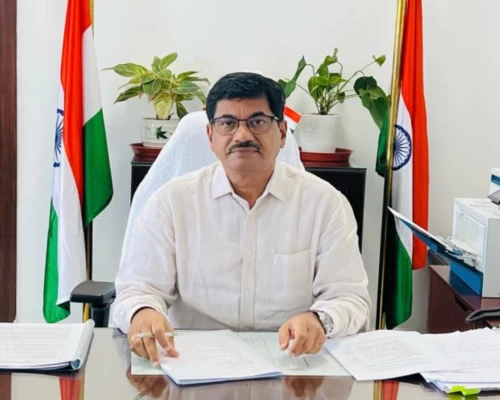
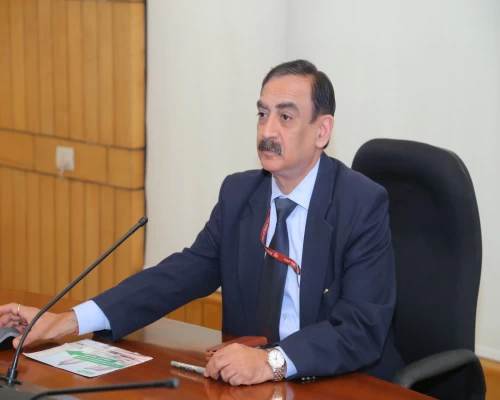
_500_x_400.webp)
